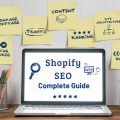Have you ever walked into a cluttered garage and thought to yourself, “Where should I start?” Picture Google doing the same thing, only with a website that has been accumulating random content for years.
You know exactly what I mean by that – old blog posts from 2018 that nobody reads any more, product pages of items no longer available and duplicate content which causes more harm than good
Content pruning isn’t just a way to make your website look better. It’s an SEO strategy that can fix your search rankings while you sleep and make them work all night, without having to wake up.
What Actually Is Content Pruning?
Let’s break this term down. In essence, content pruning is actually separating the wheat from the chaff. In other words, it’s about finding and either throwing away or enhancing content on your website that’s pulling it down.
Consider it like trimming a rose bush – you don’t want to kill the plant; you’re trying to strengthen it by cutting off those parts that don’t work.
The problem most people have with content pruning is that they think deleting old pages is the answer. This attitude spoils absolutely everything. Hygienic content pruning means cleaning up and establishing the actual status of performance for all your existing content. You need to know what’s working well and what isn’t before making any decisions regarding content.
At SEO Perth Experts, we’ve helped several sites move from page 3 to page 1 in just a few weeks by simply cleaning up and fine-tuning their writing standards. When Google can easily comprehend what your site is about – and therefore doesn’t have to wade through irrelevant fluff – it rewards you by giving you better rankings.
The Real Problem Most Perth Businesses Don’t Realise They Have
Here’s something that might surprise you – having too much content can actually hurt your SEO performance. I know, everything you’ve read says “content is king” and “publish more blog posts”. That’s only half the story, though.
Google has limited resources to crawl your site. If you’ve got 500 pages but only 50 are valuable, you’re asking Google to waste 90% of its time on rubbish content. What happens to sites that waste Google’s time? They get ignored.
We regularly conduct SEO audits for businesses across Western Australia, and one of the most common issues we find is “content bloat”. The symptoms usually look like this:
- Dozens of thin blog posts that barely scratch the surface of their topics
- Multiple pages competing for the same keywords without any clear winner
- Outdated service pages for things the business doesn’t even offer anymore
- Product categories with only one or two items that could easily be consolidated
- Event pages from years ago that serve no current purpose
- Duplicate content across different sections of the site
Many business owners don’t realise this is happening. They see their content library growing and assume that’s automatically good for SEO. Meanwhile, their best pages get buried under mediocre stuff, and Google loses interest altogether. Content bloat doesn’t just hurt search rankings – it confuses visitors and makes your site harder to navigate.
How to Spot Content That’s Hurting Your Rankings
Not all content is created equal, and some of your pages might actually be working against you. Here’s how to identify the troublemakers that need attention:
Thin Content Pages
These are pages with barely any content – maybe just a few sentences or paragraphs. Google sees these as low-value and they can drag down your entire site’s authority. Old event pages, brief product descriptions, or blog posts that barely cover their topic are common culprits.
Duplicate or Near-Duplicate Content
This happens more than you’d think. Maybe you’ve got multiple pages targeting the same keyword, or your e-commerce site has created separate pages for products that are essentially identical. Google hates confusion, and duplicate content creates exactly that.
Outdated Information
That blog post about “2019 Marketing Trends” isn’t doing you any favours in 2025. Neither are pages with broken links, discontinued services, or information that’s simply no longer relevant to your audience.
Pages with Poor User Engagement
If Google Analytics shows certain pages have sky-high bounce rates, minimal page time, or zero organic traffic, these pages might be hurting more than helping. Users vote with their clicks, and Google pays attention to these signals.
Keyword Cannibalisation Issues
This is where multiple pages on your site compete for the same keywords. Instead of strengthening your rankings, you end up confusing search engines about which page should rank for what terms.
Is outdated content dragging down your rankings? Trim the excess, let your best content shine and boost your visibility with expert SEO services.
The Different Types of Content Pruning (And When to Use Each)
There’s no one-size-fits-all approach when it comes to cutting content. You can take any of several different courses, depending on what the results of your content audit are. Consider yourself a surgeon, not a sledgehammer user.
Unresponsive content may only require minor adjustments to get back on track. It’s crucial to understand which of these two strategies will yield the best results.
Here’s how we break down the different content pruning strategies and when each one makes sense:
- Complete Removal: Delete content that serves no purpose anymore, never attracted traffic, or contains outdated information. Set up 301 redirects to preserve link equity.
- Content Consolidation: Combine multiple thin or related pieces into one comprehensive resource. Perfect for merging several blog posts on similar topics into one authoritative guide.
- Content Improvement: Beef up underperforming content by adding detail, updating statistics, or improving formatting. Works well for pages that rank for good keywords but need more depth.
- Strategic Redirects: When removing content that still receives traffic or has backlinks, redirect to a more relevant page to preserve SEO value.
The trick is to determine what method works best for each piece of content as opposed to a one-size-fits-all throughout your website. What is right for one page might be completely wrong for another, so this is why you will want to do an in-depth content audit first. A combination of these approaches usually makes up the best content pruning projects, with a carefully considered mix of tactics that take all of the potential impact into account.
Our Content Pruning Process at SEO Perth Experts
We’ve been hearing a lot of chatter about the large SEO content pruning over the last few years, so we wanted to discuss our approach to the process and what we do for our customers.
Phase 1: Complete Content Inventory
We spider your site and compile an exhaustive index of all your content. I mean every page, blog post, product description, landing page – the works. We’re also looking at indicators such as organic traffic and backlinks, conversion rates, and user engagement signals.
Phase 2: Performance Analysis
Every piece of content is judged on a couple of criteria. We are using search console data to look at what the pages are that Google really thinks are valuable, what kind of metrics from user behaviour we can analyse and go and figure out what kind of technical debt these pages might be causing.
Phase 3: Strategic Categorisation
Content is sorted into buckets: keep and improve, consolidate with other content, redirect elsewhere, and remove altogether. This is not guesswork—this is data collected and analysed about how search evaluates quality content.
Phase 4: Implementation with Safeguards
We slowly put these changes in place and watch the effect on your rankings and traffic closely. If any issues arise, we can promptly revert the changes to return to our starting point. That methodical approach is how you get the benefits without the risks.
Why Content Pruning Works So Well for SEO
Google’s algorithms have become incredibly sophisticated at understanding content quality and user intent. When you remove low-quality content from your site, several good things happen simultaneously:
- Improved Crawl Budget: Instead of wasting time on pages that don’t matter, Google focuses on your best content, leading to better indexing and more frequent crawling of important pages.
- Better Quality Signals: Google considers your website in its entirety in determining authority. When the dead weight is eliminated, stronger links receive the recognition they deserve.
- Stronger Internal Linking: When there are fewer pages to compete with, your internal links channel higher quality to your high-priority pages, which leads to better site architecture.
- Enhanced User Experience: Whether navigating through clutter or looking for something specific, guests are more likely to find it in a clean environment. Your visitors behave better, which leads to more searches.
When you deconstruct all the areas of your home that you don’t use often, everything functions better overall. With the exception of Google and other material consumers receiving a cleaner, more organised final product, the idea is essentially the same as for your page or any page.
Common Mistakes to Avoid During Content Pruning
While content pruning can deliver impressive results, it’s also one of those SEO strategies where good intentions can quickly go sideways if you don’t know what you’re doing. We’ve rescued plenty of websites that got themselves into trouble by taking shortcuts or making assumptions about their content.
The thing is, content pruning affects multiple aspects of your website simultaneously – your search rankings, user experience, internal link structure, and even your conversion funnel. One wrong move can undo months of SEO progress, which is why getting it right the first time matters so much.
Here are the most common pitfalls we see Perth businesses fall into and how to avoid them:
Don’t Rush the Process
Content pruning requires careful analysis and planning. Deleting pages without understanding their role in your site’s overall structure can cause more harm than good. We’ve seen businesses accidentally remove their highest-converting pages because they looked “unimportant” in Google Analytics.
Ignoring Technical SEO Implications
Every piece of content removal needs to be handled properly from a technical standpoint. Broken links, missing redirects, and orphaned pages can create new problems while you’re trying to solve existing ones.
Focusing Only on Traffic Numbers
A page might have low traffic but serve an important purpose in your conversion funnel. Before removing anything, consider the full customer experience and how each piece of content fits into your business goals.
Not Monitoring Results
Content pruning can have immediate effects on your search rankings – both positive and negative. Regular monitoring allows you to adjust your strategy, maximise benefits, and minimise risks.
The Long-Term Benefits of Strategic Content Pruning
Content pruning is one of those functions that can have an immediate impact, and your work will improve over time. Your website gets increasingly targeted and powerful in your niche, which helps make ranking new content much easier when you publish it later.
According to Search Engine Land, after pruning, websites that consistently produce excellent content on particular subject areas begin to “own” that topic in the eyes of search engines, leading to increased topical authority. As time goes on and your website becomes more credible in those areas, it becomes increasingly powerful.
At times, many of our Perth clients report that their new blog posts and pages rank faster and higher than ever following a content pruning project. Google knows that their website’s overall quality will improve.
Content maintenance is easier as well when you have a smaller, more focused body of content. You can focus your efforts on creating and promoting your best content—instead of managing (and praying no one reads) hundreds of mediocre pages.
How We Help Perth Businesses with Content Pruning
At SEO Perth Experts, content pruning is often part of our comprehensive SEO audits and ongoing content strategy services. We understand that every business is different, which is why we develop personalised approaches based on your specific industry, competition, and business goals.
Our team has the tools and expertise to analyse your content performance from multiple angles – technical SEO factors, user engagement metrics, competitive analysis, and business impact. This holistic approach means you get results that actually improve your bottom line, not just your search rankings.
Whether you’re dealing with an old website that’s accumulated years of clutter, or you want to optimise your current content strategy to be more focused and effective, we can help you develop and implement a content pruning strategy that works.
Getting Started with Your Content Pruning Project
Naturally, if you have hundreds or thousands of pages to review, content pruning can be overwhelming. The good news is that you do not need to fix everything at once. Working on the most difficult content first can provide some early victories that motivate you to keep going.
When you’re ready to see how content pruning could elevate your search rankings and overall web performance, we provide an SEO audit that evaluates every part of your content and tells you where you could be improving most.
In the realm of digital marketing things are ever-changing, and a robust, consistent content strategy is essential for any business based in Perth that wants a competitive advantage online. That’s not content pruning – it’s building a website that both search engines love and people find truly useful.
Want to know what strategic content pruning might do for your site’s search performance? Chat to our team on (08) 6102 5800 to talk about your unique circumstances and what you need to drive a leaner, more effective online presence that gets results for your business. Ready to cut the clutter? Contact us today.






